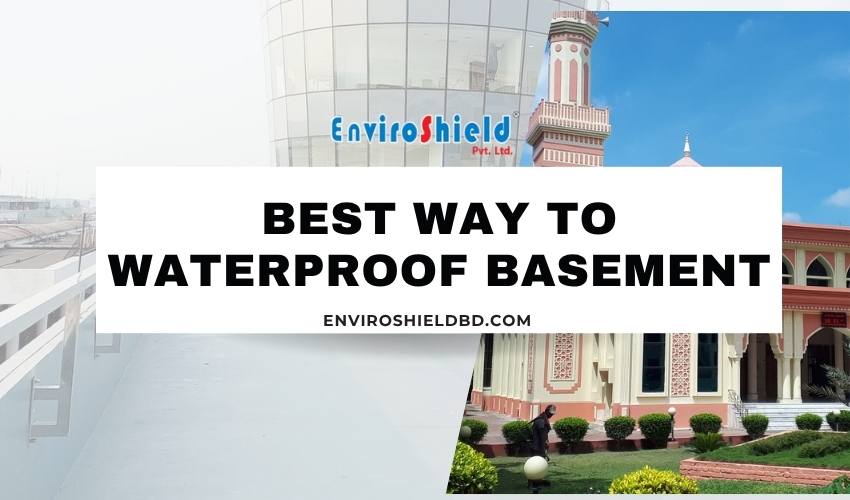Ensuring your basement stays dry starts with identifying the best way to waterproof basement—a solution that stands up to Bangladesh’s monsoon downpours and high groundwater levels. Whether you’re exploring interior waterproofing methods like sealants and drainage systems or exterior waterproofing membranes that tackle moisture at the source, this article provides practical tips, cost comparisons, and maintenance guidance tailored to local conditions.
Why Basements Leak in Bangladesh (Causes of Basement Moisture)
Hydrostatic Pressure from Groundwater
Heavy monsoon rains raise the water table, pushing water into cracks—particularly harmful in flooded zones.
Inadequate Drainage & Gutters
Improperly placed or clogged downspouts and lack of yard grading exacerbate seepage.
Condensation and Poor Ventilation
High indoor humidity and insufficient air circulation lead to damp, mold-prone environments.
Exterior Waterproofing Solutions
Waterproof Membrane & Vertical Damp-Proof Barriers
Applying polymer-based or bituminous membranes through excavation provides permanent protection—this is the only method recognized by major building codes as fully structural waterproofing.
H3: Exterior French Drains (Weeping Tiles)
Perimeter drainage systems effectively divert groundwater away from foundation walls.
H3: Yard Regrading & Proper Site Drainage
Adjusting slope around foundations helps water flow away—essential for prevention.
Interior Waterproofing Methods
Interior Sealants and Crack Injection
Sealing basement walls and injecting epoxy or polyurethane into cracks can help—but are more effective for dampness over major leaks.
Interior French Drains with Sump Pumps
Installing a channel drain inside the perimeter and combining it with a sump pump offers a reliable escape route for infiltrating water. FEMA recommends adding a backup pump and alarm for flood-prone regions.
Waterproof Paint & Cementitious Coatings
These coatings resist minor dampness and humidity but are insufficient for severe water pressures.
Choosing the Best Way to Waterproof Basement in Bangladesh
Assess the Type of Water Problem
For active leaks during heavy rains, exterior membrane with drainage is most durable. For seasonal or condensation issues, interior drains with sump pumps may suffice.
Budget vs. Durability Considerations
Exterior methods—though costlier—offer long-lasting protection. Interior solutions are budget-friendly, faster to install, but may need more frequent maintenance.
Cost & Investment Perspective
- Exterior Waterproofing
Higher upfront cost (excavation, membrane, drains) but provides long-term endurance. - Interior Waterproofing
Lower initial cost, less invasive, but ongoing pump maintenance and potential operational costs.
Maintenance for Long‑Term Success
- Test sump pumps regularly and consider battery backups during power outages.
- Ensure perimeter drainage remains clear; clean gutters and downspouts often.
- Inspect for cracks and reseal annually to prevent escalation.
- Look for signs like efflorescence, peeling paint, or mold growth to catch issues early.
Explore our specialized Basement Waterproofing services for tailored solutions: Basement Waterproofing.
Learn more about our nanotech-based solutions with guarantee: Concrete Gum Shield TDS.
External Authoritative References
- Techniques like interior sealers, French drains, and sump pumps are standard methods in waterproofing foundations.
- Explanation of waterproofing membranes and coatings worldwide.
When it comes to the best way to waterproof basement, exterior waterproofing combined with proper drainage remains the most durable and structural option—even though options like interior drains and sealants present useful alternatives under certain conditions. Prioritize long-term protection, especially for Bangladesh’s challenging moisture patterns.
Ready to secure your basement with professional, high-performance waterproofing? Contact Enviro Shield today for a free consultation or quote—and take the first step toward a dry, resilient home.
